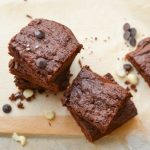What does intermittent fasting do to insulin

Hurry and fast!
Because elevated insulin is one of the most relevant factors in being lean and healthy, a rational strategy is to follow a dietary plan that incorporates periods of not eating to help insulin stay low (please see this article for more information on the importance of insulin). This perspective immediately suggests that frequent eating is less effective than less frequent eating—indeed, three meals per day is better than six [1]—but are fewer than three meals better still? Very likely.
Time-restricted feeding and intermittent fasting strategically include periods of deliberate food avoidance. The evidence regarding its efficacy in improving insulin sensitivity is valid, though it partially depends on how it’s done. Two studies used this idea by having study subjects eat normally one day (i.e. unrestricted) and essentially fast the entire second day (i.e., alternate-day fasting), repeated seven times over a two-week period and found conflicting results—one reporting an improvement in insulin sensitivity [2], while the other observed no benefit [3]. An alternative strategy, wherein the person confines eating to a specific window of time each day (e.g., eating breakfast and dinner only [4], or lunch and dinner only [5]) yielded robust improvements in insulin sensitivity.
Dr. Jason Fung, one of the leading voices in the application of fasting, recently shared data that highlight just how rapidly effective fasting can be. When insulin resistance gets severe in a person with type 2 diabetes, they may be prescribed insulin therapy to help control blood glucose. Generally, this is an irreversible situation—once they start insulin, they’re on it until the end. In this case study [6], by encouraging patients with type 2 diabetes to engage in alternate day fasting, each of the patients experienced such a rapid improvement in insulin sensitivity that each was able to entirely stop using insulin within just a few weeks!
A critical distinction must be made between thoughtful food restriction and starvation. Whereas fasting and time-restricted eating is a deliberate restriction of food daily (i.e. time-restricted eating) or for longer (i.e. intermittent fasting), each is an approach that involves eating fully for some period of time, with deliberate restriction for only certain periods—part of a day each day or an entire day every so often. There is ideally no calorie counting with either strategy—simply avoiding food certain times and eating until satiated other times.
It may seem like splitting hairs, but there’s an important, yet fine line between eating to keep insulin low vs. starving your body. Taken to an extreme, it’s possible fasting can do more harm than good. There is no definite time past which fasting becomes harmful; so much depends on the constitution of the person fasting, how they define “fasting” (e.g. what are they drinking, how are they supplementing, etc.), and how they’re compensating for not eating essential minerals (e.g. magnesium). Importantly, early studies into prolonged fasting found a potentially lethal consequence can develop after fasting ends, termed “refeeding syndrome” [7]. And, if not done smartly, prolonged fasting becomes actual starvation, which can paradoxically cause the body to become insulin resistant [8].
The elephant in the room with studies exploring time-restricted eating or intermittent fasting is the macronutrient content of the diet. (To my knowledge, these studies have yet to be performed.) Altering the macronutrients of the diet (e.g., carbohydrates vs. fats) may yield disparate responses not only with how well the individual can maintain the diet, but also whether it’s healthy. Whether it’s feasible and sustainable are affected predominantly by the amount of calories consumed; if a person fasts ~18 hours each day (e.g., eating from noon to 6 PM), whether this is healthy will depend on what they eat when they do eat. By consuming more of one macronutrient over another, the person may ensure they’re providing sufficient energy to the body, despite eating less total amount (i.e., volume) of food, which means increased satiety [9].
Energy (e.g., calories) from a meal conveys greater satiety than bulk—if your cells are fed, they don’t care whether there’s something in your stomach. Thus, meals that provide energy without spiking insulin (i.e. dietary fat) not only provide energy to the body, but also prevent the hunger that comes with increasing insulin [10], making fasting easier.
Nutrient fast vs. caloric fast
What if you could get some of the benefits of fasting, including lowering insulin and improving insulin sensitivity, without actually fasting? To be clear: there are certainly benefits to a true fast that make it unique, but it’s worth highlighting a view that some of the metabolic benefits of fasting can be realized while still eating some foods.
As the famous metabolism scientist George Cahill once stated: “insulin serves as the body’s signal for the fed or fasted state” [11]. In other words, insulin is the hormone that distinguishes the “fed” vs. “fasted” states; if insulin is high, the body is in the “fed” state, and if insulin is low, the body is in the “fasted” state. Accordingly, if we use a true fast, which is the avoidance of all calories (i.e., “caloric fast”), to keep insulin low, then a way to mimic that state is by eating the nutrients—protein and fat—that also keep insulin low (i.e., “nutrient fast”).
With insulin as the focus, viewing the right nutrients as a form of fasting has real merit. For example, when someone is eating a typical high-carbohydrate diet, insulin will be consistently elevated, driving fat storage [12], slowing metabolic rate [13], and inhibiting autophagy (the body’s way of “cleaning” out damaged cells to regenerate healthier cells) [14]. Conversely, as with a caloric fast, a nutrient fast that avoids carbohydrates in favor of protein and fat, insulin stays low and the body burns more fat [15], increases metabolic rate [13], and activates autophagy [16].
Take-away Thoughts
Fasting isn’t about cutting calories. Fasting is a wonderful way to improve your health and insulin sensitivity, but the most important thing about a fast is how you end it. That first post-fast meal will spike insulin, undoing many of the benefits of the fast, or will keep insulin low, allowing many of the benefits from the fast to continue.
What this means for you: Restricting eating to a specific window of time each day (e.g. skipping breakfast), is a strategic way to lower insulin and improve insulin sensitivity.
For more information on fasting, please visit our friends at The Fasting Method.
References
1 Hutchison, A. T. and Heilbronn, L. K. (2016) Metabolic impacts of altering meal frequency and timing – Does when we eat matter? Biochimie. 124, 187-197
2 Halberg, N., Henriksen, M., Soderhamn, N., Stallknecht, B., Ploug, T., Schjerling, P. and Dela, F. (2005) Effect of intermittent fasting and refeeding on insulin action in healthy men. Journal of applied physiology. 99, 2128-2136
3 Soeters, M. R., Lammers, N. M., Dubbelhuis, P. F., Ackermans, M., Jonkers-Schuitema, C. F., Fliers, E., Sauerwein, H. P., Aerts, J. M. and Serlie, M. J. (2009) Intermittent fasting does not affect whole-body glucose, lipid, or protein metabolism. The American journal of clinical nutrition. 90, 1244-1251
4 Zakaria, A. (2013) Ramadan-Like Fasting Reduces Carbonyl Stress and Improves Glycemic Control in Insulin Treated Type 2 Diabetes Mellitus Patients. LIfe Science Journal. 10, 384-390
5 Harvie, M. N., Pegington, M., Mattson, M. P., Frystyk, J., Dillon, B., Evans, G., Cuzick, J., Jebb, S. A., Martin, B., Cutler, R. G., Son, T. G., Maudsley, S., Carlson, O. D., Egan, J. M., Flyvbjerg, A. and Howell, A. (2011) The effects of intermittent or continuous energy restriction on weight loss and metabolic disease risk markers: a randomized trial in young overweight women. Int J Obes (Lond). 35, 714-727
6 Furmli, S., Elmasry, R., Ramos, M. and Fung, J. (2018) Therapeutic use of intermittent fasting for people with type 2 diabetes as an alternative to insulin. BMJ Case Rep. 2018
7 Mehanna, H. M., Moledina, J. and Travis, J. (2008) Refeeding syndrome: what it is, and how to prevent and treat it. BMJ. 336, 1495-1498
8 Koffler, M. and Kisch, E. S. (1996) Starvation diet and very-low-calorie diets may induce insulin resistance and overt diabetes mellitus. J Diabetes Complications. 10, 109-112
9 de Graaf, C., Hulshof, T., Weststrate, J. A. and Jas, P. (1992) Short-term effects of different amounts of protein, fats, and carbohydrates on satiety. The American journal of clinical nutrition. 55, 33-38
10 Rodin, J., Wack, J., Ferrannini, E. and DeFronzo, R. A. (1985) Effect of insulin and glucose on feeding behavior. Metabolism: clinical and experimental. 34, 826-831
11 Cahill, G. F., Jr. (1971) The Banting Memorial Lecture 1971. Physiology of insulin in man. Diabetes. 20, 785-799
12 Czech, M. P., Tencerova, M., Pedersen, D. J. and Aouadi, M. (2013) Insulin signalling mechanisms for triacylglycerol storage. Diabetologia. 56, 949-964
13 Ebbeling, C. B., Feldman, H. A., Klein, G. L., Wong, J. M. W., Bielak, L., Steltz, S. K., Luoto, P. K., Wolfe, R. R., Wong, W. W. and Ludwig, D. S. (2018) Effects of a low carbohydrate diet on energy expenditure during weight loss maintenance: randomized trial. BMJ. 363, k4583
14 Meijer, A. J. and Codogno, P. (2008) Autophagy: a sweet process in diabetes. Cell metabolism. 8, 275-276
15 Cipryan, L., Plews, D. J., Ferretti, A., Maffetone, P. B. and Laursen, P. B. (2018) Effects of a 4-Week Very Low-Carbohydrate Diet on High-Intensity Interval Training Responses. J Sports Sci Med. 17, 259-268
16 Finn, P. F. and Dice, J. F. (2005) Ketone bodies stimulate chaperone-mediated autophagy. The Journal of biological chemistry. 280, 25864-25870
This article is for informational and educational purposes only. It is not, nor is it intended to be substitute for professional medical advice, diagnosis, or treatment and should never be relied upon for specific medical advice.


















